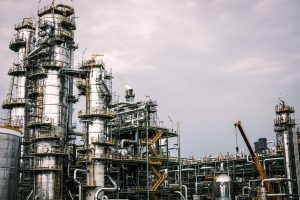Trump To Extend US Work Visa Freeze To Year-End: White House

US President Donald Trump will prolong a ban on US employment permits to year-end and broaden it to include H-1B visas used widely in the tech industry, the White House said Monday.
A senior administration official told journalists the move would affect 525,000 jobs in the US, which is currently reeling from a high unemployment rate caused by the coronavirus pandemic.
Trump had repeatedly touted a strong economy, but now finds himself desperate for a political boost ahead of the November election.
The executive order, signed Monday afternoon, will extend and widen the 60-day freeze Trump placed on new work permits for non-US citizens two months ago.
The administration official said the new order would extend to the end of 2020 and include H-1B visas provided to 85,000 workers each year with special skills, many of them joining the US technology industry.
It will also cover most J visas, common for academics and researchers, and L visas used by companies to shift workers based overseas to their US offices.
Google CEO Sundar Pichai — whose company has been a leading beneficiary of the H1-B visa system — said he was “disappointed” by the announcement.
“Immigration has contributed immensely to America’s economic success, making it a global leader in tech,” he wrote on Twitter.
The move comes as Trump feuds with Silicon Valley after tech titans Twitter and Snapchat censored or hid posts by the president they claimed incited violence or were misleading.
Last month Trump signed an order seeking to strip social media giants of legal immunity for content on their platforms in a move slammed by his critics as a legally dubious act of political revenge.
– ‘Prioritize’ valuable workers –
The official said the order was necessary to respond to soaring unemployment that resulted from the COVID-19 shutdown.
The official also stressed the H-1B visa freeze was temporary while the program is restructured, shifting from an annual lottery that feeds coders and other specialists to Silicon Valley to a system that gives priority to those foreign workers with the most value.
Trump “is going to prioritize those workers who are offered the highest wages,” as an indicator that they can add more value to the US economy, the official said.
“It will eliminate competition with Americans… in these industries at the entry level, and will do more to get the best and the brightest.”
The move also freezes most H-2B visas — used each year for about 66,000 short-term, low-skilled jobs in landscaping, food and hospitality industries — and H-4 visas, which allow spouses of other visa holders to work.
Exemptions will apply to seafood processing plants and to au pairs, who offer families household help like childcare.
In addition, the official said the government is issuing new regulations that will make it much harder for tens of thousands of asylum seekers waiting for their court hearings to work legally in the meanwhile.
With often a two-year wait for a case to be reviewed, the administration sees many people apply for asylum mainly to be able to acquire work permits.
South Carolina senator Lindsey Graham, normally a firm Trump supporter, criticized the decision and tweeted: “Those who believe legal immigration, particularly work visas, are harmful to the American worker do not understand the American economy.”
He added that he feared the president’s decision “will create a drag on our economic recovery”.
Layoffs caused by the coronavirus pandemic in the US passed 45.7 million last week, and although many jobs will come back as the country reopens, there are worries that some have been irrevocably lost by the heavy financial impact on businesses and local governments.
Federal Reserve Chair Jerome Powell warned earlier this month that unemployment could still be 9.3 percent nationwide at the end of the year, an improvement from the current 13.3 percent but still devastatingly high.
-AFP







